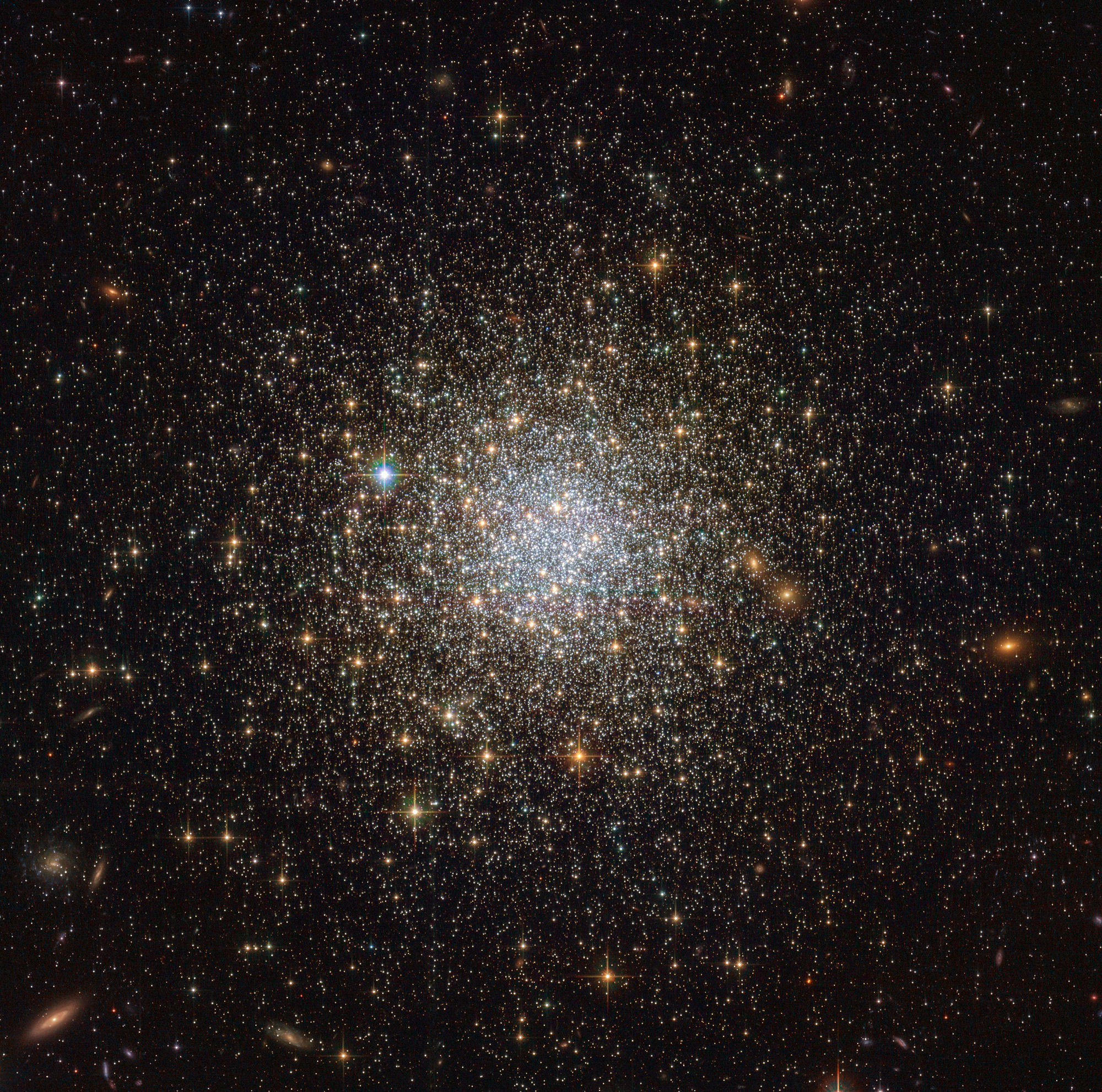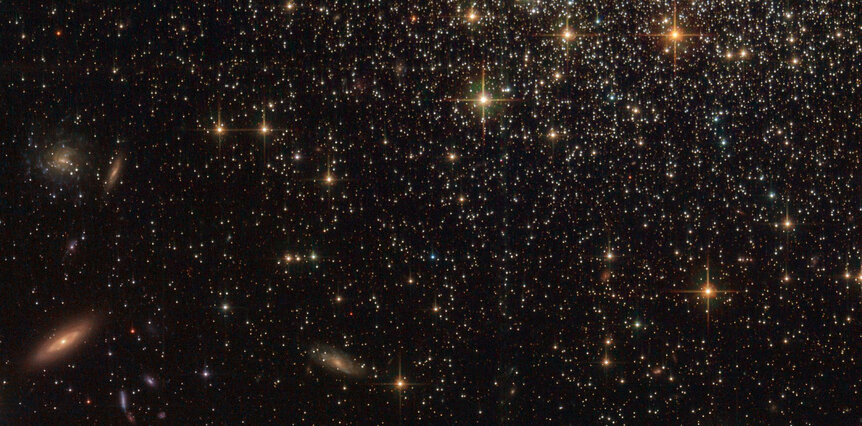Create a free profile to get unlimited access to exclusive videos, sweepstakes, and more!
A distant box of jewels

I do so love a beautiful globular cluster. Despite the rather clunky and prosaic name, they are are among the most beautiful objects in the heavens. Tightly packed and self-contained, these are collections of hundreds of thousands or even millions of stars in a roughly spherical conglomeration, held into orbit around the center by their own mutual gravity.
A typical globular is only a couple of hundred light years across, and most of the action is in a volume much smaller than that; they have compact cores packed with stars, and fade away toward the outskirts.
In our neck of the Milky Way, stars are a few light years apart; the nearest star to the Sun is a little over four light years distant. In a globular there are thousands of stars within that distance. Imagine what the sky would look like inside one!
The European Space Agency just released a Hubble Space Telescope image of one such globular, and it surprised me: It was one I had never heard of, NGC 1466… and it's a stone cold beauty.
Yeah.
This image is stunning, yet the more I looked at it the more it bugged me. For one thing, most globulars orbiting the Milky Way are so big that they fill the image, or nearly so, yet NGC 1466 is smaller. I was surprised to see so many distant background galaxies, too — those faint fuzzies dotting the image from top to bottom. In most Hubble images of globulars you don't see very many, in part because stars in globulars are bright in Hubble images, so you don't need long exposures to get what you need. This looks like a longer exposure to me (or actually, a combination of many long exposures).
Then I read the text explaining the image, and all became clear: This globular doesn't orbit the Milky Way! It actually lies on the outskirts of the Large Magellanic Cloud, a satellite galaxy of our own. NGC 1466 is far away, about 158,000 light years from us. Most globulars I'm familiar with are far less than half that distance. So that explains why I hadn't heard of it, why it looks small, and why it needed longer exposure times. At that distance it's pretty faint, about 11th magnitude. The faintest star you can see with your naked eye is 100 times brighter than NGC 1466! Mind you, there are a couple of globulars in the sky you can see with the naked eye (47 Tucanae and Omega Centauri; I've seen the latter with just my eyes myself). So this one is pretty faint.
It's a testament to Hubble's keen vision that individual stars can be picked out right down to the core of the cluster. That's rather the point; these images were taken to look at a special class of stars called RR Lyrae variables, which change their brightness in a predictable cycle. The time it takes for the star to pulse is tied to its luminosity, how much light it gives off. Since we can measure its apparent brightness, that allows us to get the distance to the star! So, in turn, we can get the distance to the cluster itself.
Individual stars in distant galaxies might be hard to see, but globular clusters are far brighter than single stars, and are more easily seen at great distances. So if we can calculate distances to nearby ones, we can bootstrap that to more distant ones, and therefore to the galaxies they orbit.
We call this idea the cosmic distance ladder, and that's one rung on it. At the bottom is getting the distance to nearby stars using parallax, then using that to figure out the distances to stars farther away, then star clusters, then galaxies, then galaxy clusters… and eventually measuring the scale of the Universe itself. There are different ways to do this, like using exploding stars, dying stars, and other objects where the distances can be determined. This acts as a check on our methods, because if they disagree then we're doing something wrong.
Happily, most methods agree pretty well. The Universe is a big place. But we have to start somewhere, and looking at the space around our Milky Way is clearly a treasure trove of useful, interesting, and drop-dead gorgeous objects.




























